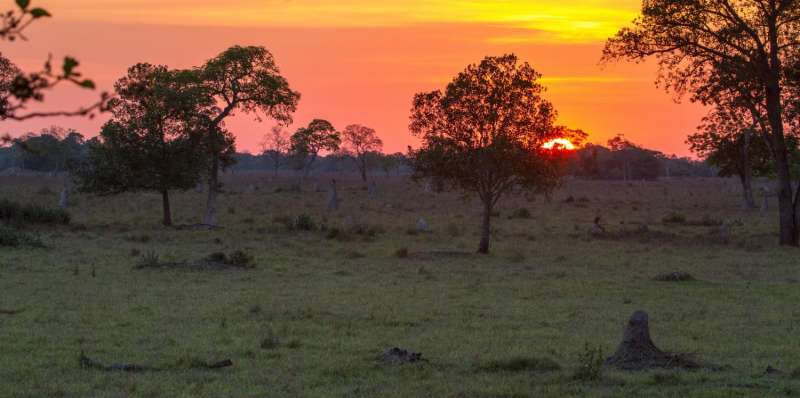Wilderness areas are being destroyed but the World Heritage Convention can protect them

A University of Queensland-led international study published today urges the UNESCO World Heritage Convention to better conserve wilderness areas within Natural World Heritage Sites.
Lead author and UQ PhD student in the School of Earth and Environmental Sciences James Allan said the study revealed that only 1.8 per cent of the world's wilderness is protected in these sites.
Mr Allan said while some sites like the Okavango Delta in Botswana and Purnululu National Park in Australia both had excellent wilderness coverage, there were broad gaps in wilderness coverage across the globe.
The study identifies protected areas within these gaps, for example the Hukaung Valley Tiger Reserve in Myanmar or Eduardo Avaroa Andean Fauna Reserve in Bolivia that have good wilderness coverage and may warrant consideration for World Heritage Status.
"Globally important wilderness areas are increasingly being shown as not only strongholds for endangered biodiversity, but critical in the fight to abate climate change, for regulating local climates, and supporting many of the world's most culturally diverse but politically and economically marginalised communities," Mr Allan said.
"Despite their importance, wilderness areas are being destroyed at an alarming rate and need urgent protection.
"The World Heritage Convention has the ability to do this by improving wilderness coverage within Natural World Heritage Sites."
Natural World Heritage Sites (NWHS), via the formal process run by UNESCO (United Nations Educational, Scientific and Cultural Organization), are globally recognised as containing some of the Earth's most valuable and most threatened natural assets.
Senior author Associate Professor James Watson of UQ and the Wildlife Conservation Society said wilderness conservation had been almost completely ignored in environmental policy.
"There is not just an important opportunity but an urgent need for a global environmental convention to recognise the importance of conserving wilderness before it is too late," Dr Watson said.
"The World Heritage Convention can better achieve its own objectives by increasing wilderness coverage within NWHS, which in turn will raise the profile of wilderness conservation globally, and provide wilderness areas with additional protection they need. It is a win-win situation."
More information: "Gaps and opportunities for the World Heritage Convention to contribute to global wilderness conservation" Conservation Biology, DOI: 10.1111/cobi.12976
Journal information: Conservation Biology
Provided by University of Queensland
















